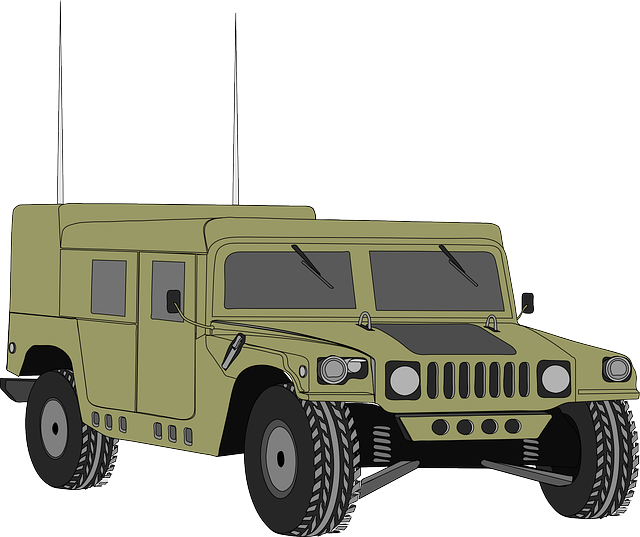Unlock Brownsville’s Wild West: Save on Top Truck Recovery Gear
"Transform your off-road experiences in Brownsville, Texas, with our exclusive offer from Brown…….
In the dynamic world of transportation and logistics, efficient fleet management is a cornerstone for businesses across industries. One critical component that often goes unnoticed but plays a pivotal role is the recovery equipment used in fleet trucks. This article delves into the intricate details of Brownsville Texas fleet truck recovery equipment, exploring its definition, significance, global impact, technological advancements, regulatory landscape, and future prospects. By examining these aspects, we aim to provide valuable insights for professionals in the field and emphasize the crucial role this equipment plays in shaping the efficiency and safety of modern fleets.
Brownville Texas fleet truck recovery equipment refers to a specialized set of tools and machinery designed to facilitate the efficient and safe towing, lifting, and recovery of damaged or disabled commercial trucks. This equipment is tailored to meet the unique challenges faced by fleet operators in the diverse terrain and road conditions prevalent in Brownsville, Texas, and similar urban areas.
The primary components of this recovery equipment include:
Towing Vehicles: Custom-built towing trucks equipped with powerful engines and advanced hitch systems to handle heavy loads safely. These vehicles are designed for off-road capabilities, ensuring they can navigate challenging city streets and highways.
Hydraulic Lifts: Powerful hydraulic jack systems capable of lifting and supporting disabled vehicles at various angles. These lifts come in diverse configurations, including flatbed lifts and air-bag lifts, to accommodate different truck types and recovery scenarios.
Winches and Chains: Heavy-duty winches with robust chains or cables for pulling and securing trucks during towing. These tools are essential for managing heavy loads and preventing damage during the recovery process.
Recovery Straps and Belts: High-strength straps and belts designed to secure trucks firmly, ensuring stability and minimizing movement during transport. They are crafted from durable materials to withstand intense strain.
The need for specialized recovery equipment has evolved over time, driven by the increasing complexity of commercial vehicles and the demands of modern logistics. In Brownsville, where diverse terrain and heavy traffic contribute to a higher incidence of vehicle breakdowns and accidents, efficient recovery systems are not just desirable but essential.
Historically, fleet operators relied on generic towing services, which often led to inefficiencies and longer response times. The introduction of dedicated recovery equipment has revolutionized fleet management by:
Reducing Downtime: Quick recovery enables trucks to return to service faster, minimizing idle time and maximizing operational efficiency.
Enhancing Safety: Specialized equipment ensures safer towing and lifting procedures, reducing the risk of vehicle damage or injury to recovery personnel.
Optimizing Resource Utilization: Efficient recovery allows for better utilization of fleet resources, leading to cost savings and improved bottom line.
Brownville Texas fleet truck recovery equipment has left its mark globally, with many cities and countries adopting similar systems to address the unique challenges of urban transportation. The international impact can be attributed to several factors:
Urbanization: Rapid urbanization in developing nations has led to a surge in commercial vehicle traffic, creating a greater demand for efficient recovery solutions.
Diverse Terrain: Cities worldwide face diverse geographical challenges, from narrow alleyways to hilly landscapes, necessitating specialized equipment tailored to local conditions.
Regulatory Compliance: Many countries have implemented stringent safety regulations, driving the adoption of advanced recovery systems to ensure compliance and reduce accidents.
The global fleet recovery equipment market is experiencing several notable trends:
Electrification and Automation: The integration of electric motors and automated systems into recovery equipment improves efficiency, reduces emissions, and enhances operator safety.
Smart Technology Integration: Incorporating IoT (Internet of Things) devices and data analytics enables real-time monitoring, predictive maintenance, and enhanced fleet management capabilities.
Off-Road Capability Focus: As cities expand and urbanize, there is a growing demand for equipment capable of navigating challenging off-road conditions, ensuring faster response times in emergencies.
The adoption and specific requirements for recovery equipment vary across regions:
North America: Known for its advanced fleet management technologies, North American markets prioritize highly customizable and technologically advanced recovery systems.
Europe: Strict environmental regulations have driven the development of eco-friendly recovery equipment, focusing on low-emission towing vehicles and sustainable materials.
Asia Pacific: Rapid economic growth in this region has led to a surge in commercial vehicle sales, creating a massive demand for efficient recovery solutions at competitive prices.
The global fleet truck recovery equipment market is characterized by:
High Demand: The increasing number of commercial vehicles on the road and the growing need for efficient fleet management drive market growth.
Competitive Landscape: Numerous local and international manufacturers compete, offering a wide range of products at varying price points to cater to diverse customer needs.
Technological Advancements: Innovation in recovery equipment is rapid, with new technologies and designs constantly emerging to gain a competitive edge.
The cost of fleet truck recovery equipment varies based on:
Equipment Type: The price range for specialized towing vehicles, hydraulic lifts, winches, and associated accessories can vary significantly.
Customization: Customized solutions for specific fleet requirements often carry premium pricing due to their tailored nature.
Maintenance and Support: Ongoing maintenance costs, including regular servicing and parts replacement, are essential considerations in total ownership expenses.
Implementing dedicated recovery equipment offers significant economic advantages:
Reduced Towing Costs: Efficient recovery systems minimize the need for extended towing distances, lowering fuel costs and labor expenses.
Improved Fleet Uptime: Faster response times and reduced downtime contribute to increased fleet availability and improved operational efficiency.
Longevity of Vehicles: Proper lifting and towing techniques extend the lifespan of commercial vehicles by preventing damage.
The integration of electric motors into recovery equipment offers several benefits:
Environmental Friendliness: Electric towing vehicles produce zero emissions, contributing to cleaner urban environments.
Lower Operating Costs: Electricity is generally cheaper than traditional fuel, resulting in substantial long-term savings.
Quiet Operation: Electric systems operate silently, reducing noise pollution in urban areas.
The incorporation of IoT and data analytics enhances recovery equipment capabilities:
Real-Time Monitoring: Sensors can track equipment location, performance, and maintenance needs in real-time, enabling proactive fleet management.
Predictive Maintenance: Data analytics predict equipment failures before they occur, minimizing downtime and reducing maintenance costs.
Enhanced Safety Features: Advanced safety systems, such as collision avoidance and autonomous braking, further improve operator safety.
Improving off-road capabilities ensures faster response times in challenging urban environments:
All-Wheel Drive Systems: Some manufacturers offer all-wheel drive options, enhancing traction and stability on rough terrain.
Advanced Suspension Systems: Improved suspension designs absorb shocks more effectively, ensuring smoother towing and lifting operations.
Tread Design: Specialized tire treads provide better grip in muddy or icy conditions, preventing vehicle stalling.
Many countries have implemented stringent safety regulations for fleet recovery equipment:
North America (NHTSA): The National Highway Traffic Safety Administration sets standards for vehicle safety, including requirements for towing and lifting equipment.
European Union (UE) Regulations: The EU has established comprehensive guidelines for vehicle equipment, ensuring compatibility and safety across the bloc.
Local City Ordinances: Individual cities may have specific regulations regarding equipment calibration, maintenance, and operator certification.
As environmental concerns grow, regulatory bodies are pushing for eco-friendly solutions:
Emission Standards: Many regions have implemented strict emission norms for towing vehicles, encouraging the adoption of electric or hybrid systems.
Waste Management: Proper disposal and recycling of equipment components, especially critical for hydraulic fluids and tires, is a growing focus.
Energy Efficiency: Regulatory bodies promote energy-efficient technologies, such as LED lighting and advanced battery systems, in recovery equipment.
The future of fleet truck recovery equipment holds exciting possibilities:
Autonomous Recovery Systems: The development of fully autonomous recovery vehicles promises to revolutionize fleet management, eliminating the need for operator presence during recovery operations.
Drone Integration: Drones equipped with high-resolution cameras and sensors could provide aerial support for complex recovery scenarios, offering new perspectives and safety enhancements.
Artificial Intelligence (AI): AI algorithms can analyze equipment performance data to predict maintenance needs, optimize fleet routing, and improve overall operational efficiency.
Sustainability is set to be a defining characteristic of future recovery equipment:
Eco-Friendly Materials: Manufacturers are exploring the use of sustainable materials for equipment construction, reducing environmental impact.
Recycling Programs: Implementing efficient recycling programs for end-of-life equipment components will become essential.
Renewable Energy Sources: Towing vehicles powered by renewable energy sources, such as solar or wind power, could become more prevalent.
Brownville Texas fleet truck recovery equipment represents a critical component in the modern transportation industry’s pursuit of efficiency, safety, and sustainability. As cities continue to grow and urbanize, the demand for specialized recovery systems will only increase. By embracing technological advancements, prioritizing sustainability, and adhering to strict safety standards, the future of fleet recovery looks promising. This evolving landscape offers exciting opportunities for manufacturers, fleet operators, and regulatory bodies to collaborate on innovative solutions that benefit the industry as a whole.

Looking to boost your bottom line while enhancing the efficiency of truck towing operations in Brown…….

Need reliable fleet truck recovery in Brownsville, Texas? Top-Notch 4×4 Repairs is here to revolutio…….

Looking to boost profits for your Brownsville, Texas fleet? Invest in our cutting-edge truck recover…….

Need reliable fleet trucks in Brownsville, Texas, equipped for any challenge? Look no further than B…….

Are you a fleet operator in Brownsville, TX, tired of high tire costs and unsafe travel? Let our exp…….

Looking to keep your fleet in Brownsville, Texas, rolling smoothly? Investing in our specialized tru…….